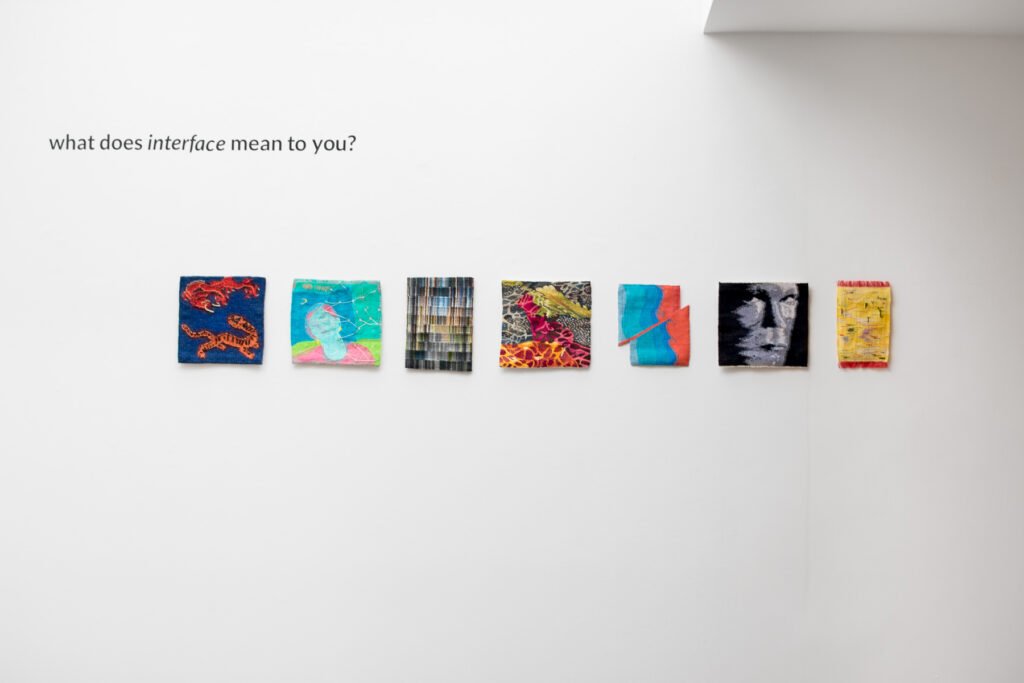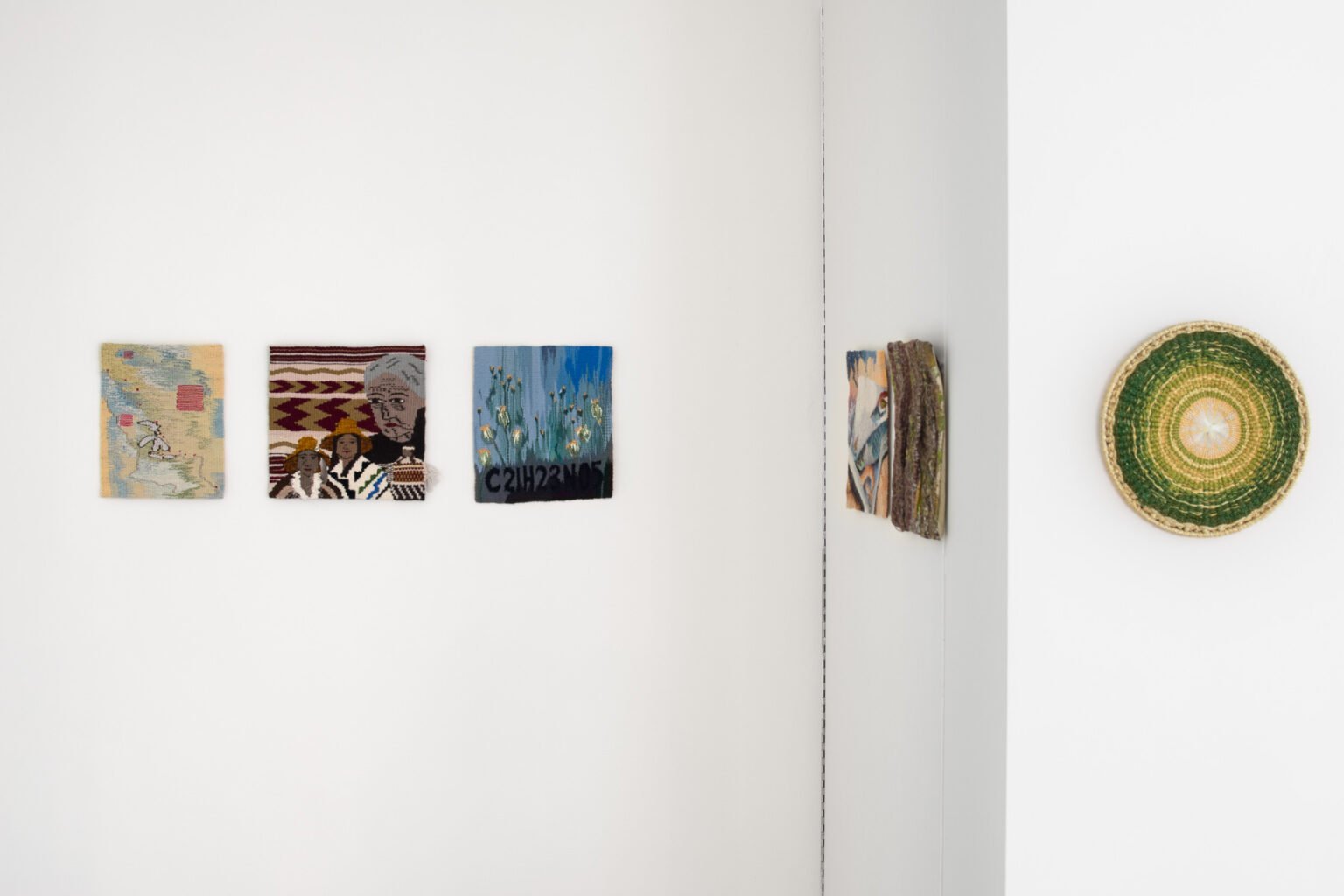CCBC member and participating artist Barbara Heller takes a minute to review the latest installment of Tapestry Touring International, Interface. TTI has asked artists to respond to question “what does interface mean to you?” in small format tapestries. Interface is on view in our gallery space until April 22, 2021.
Way back in 2018, before COVID splintered us, we were still separated by distance. The miles and miles across Canada, from coast to coast to coast, and then the miles across the ocean to England. When Jane Freear Wyld sent her first email asking if I was interested in participating in a joint show of small format tapestry I was delighted to say yes and join with a community of tapestry artists that spanned the globe. Jane asked for tapestries on the theme of Interface, an abstract enough concept to allow for freedom in interpretation and inspiring enough to encourage creativity. And so apt a way to bridge the geographical distances that keep us apart.
I asked myself what 15 artists from Canada and 15 artists from England would have in common. Looking at the 30 tapestries, would one be able to tell which came from which country? What does an artist bring to their work that makes it identifiably theirs? And how would other people interpret the theme?
Looking at the tapestries now hanging in the CBC gallery, I see commonalities and not differences though there are as many different approaches as there are artists. Many tackle environmental issues and the beauty of nature, many are very personal visions, many are realistic and some are purely abstract.


Many are woven in the traditional European techniques of hachures and hatching (think The Lady and the Unicorn) but many (more than I expected) are experimental in technique. Wikipedia defines tapestry as “a form of textile art, traditionally woven by hand on a loom. Tapestry is weft-faced weaving, in which all the warp threads are hidden in the completed work, unlike most woven textiles, where both the warp and the weft threads may be visible. In tapestry weaving, weft yarns are typically discontinuous; the artisan interlaces each coloured weft back and forth in its own small pattern area. It is a plain weft-faced weave having weft threads of different colours worked over portions of the warp to form the design.” Much of the work in this show would not have been considered “real” tapestry then.
In Interface we find artists breaking boundaries in interpreting their ideas. You can see traditional tapestry but also shaped weaving, embroidery on the surface, soumak, twining, and twisted warps. Some tapestries are very finely woven and some are more textured, more tactile. One tapestry is circular, one is made up of rows of narrow woven strips. This is very exciting. It means the idea being communicated is more important than the technique used. All the work in Interface is of a high quality woven by experienced and competent artists.
You can read more about Interface and the participating artists at the button below.

